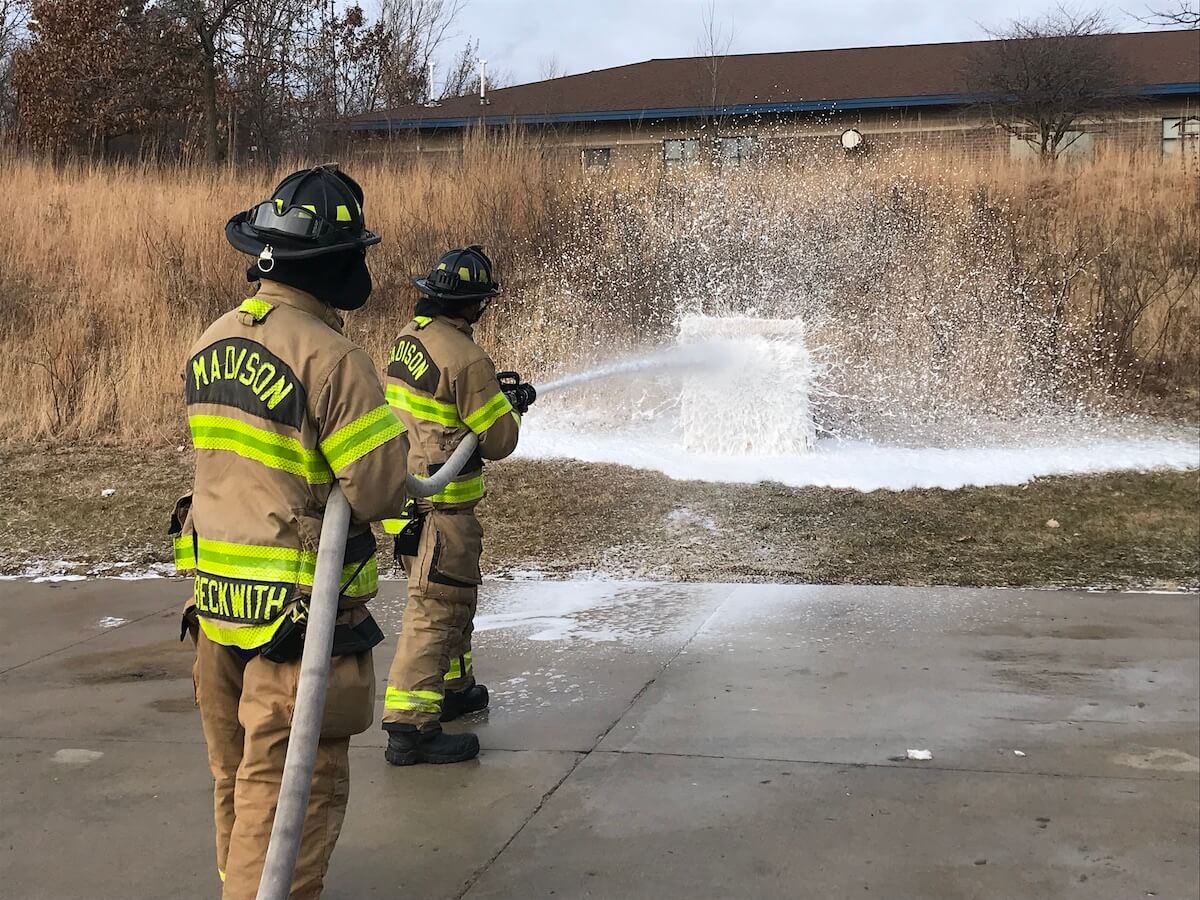
#image_title
Harmful chemicals removed, but GOP refuses to help ID more contaminated sites
Firefighters across the state will have to use foam that no longer contains a highly toxic group of chemicals, except in emergency situations where water alone is not enough to fight a blaze, under a bill that passed the state Senate Tuesday along party lines.
While the bill – on its way to the governor for approval – is focused on preventing future contamination, Republicans were sharply criticized for not taking further steps to discover and clean up scenes of past damage.
The firefighting foam has long been used by firefighters in training exercising and to battle blazes. It contains perfluoroalkyl and polyfluoroalkyl, substances commonly referred to as PFAS or forever chemicals, due to the lengthy amount of time they take to decompose.
These chemicals have been used for commercial and industrial purposes since the 1940’s and are linked to decreased fertility, cancer and a number of other health problems.
The move by the state comes after fire departments in Fond du Lac, Madison, Pleasant Prairie and Kenosha stopped using the foam last year.
The Fond Du Lac Fire Department stopped using PFAS-containing foam in training exercises last June after the city’s water department raised concerns of contamination, said Fond du Lac Assistant Chief Erick Gerritson.
On Jan. 1, the department stopped using the foam altogether and is working to dispose of the foam that is left in storage. That foam could still be used “in case we have a very, very large event,” Gerritson said. Departments in Madison stopped using the foam in December. The Kenosha Fire Department also decided last fall to stop using the foam, citing environmental concerns.
“This stuff (PFAS foam) is not good, even just for the firefighters touching or handling,” Gerritson said. “We wanted to make measurements to get rid of it as soon as we can and get it off of our engines.”
PFAS-free foam does not work quite as well as foam that contains the chemical, but the tradeoff is worth it to mitigate the health and environmental concerns, Gerritson said.
The legislation is backed by industry, local governments and first responders.
Democratic lawmakers and clean water advocates argue the bill does not go far enough to address the extent of the state’s contamination problems. For example, 31 sites have been identified by the DNR as contamination sites, said Carly Michiels, government relations director with Clean Wisconsin.
“Although the bill is a small step forward to address PFAS contamination, it is not enough,” Michiels said. “People are drinking contaminated water, playing in polluted waterways and eating contaminated food, like fish, already in Wisconsin. We need a stronger stance to protect our communities from this federally unregulated, harmful chemical.”
A more comprehensive bill introduced by Democrats last year, known as the CLEAR Act, is favored by organizations like Clean Wisconsin but has failed to gain any traction in the Republican-led Senate and Assembly. .
The CLEAR Act seeks to expand the list of PFAS chemicals the DNR would monitor.
The state Department of Natural Resources held a public hearing in November to begin the process to develop groundwater, drinking and surface water standards for PFAS. The Natural Resources Board meets Wednesday. On the agenda is the approval of the statement of scope.
Currently, PFAS are not regulated by the federal government.
“The people cannot wait another session or two for a more comprehensive bill,” said Sen. Dave Hansen, D-Green Bay, during the Senate debate of the bill. “People are getting sick. I don’t want to scare any young people, but this is scary. This is truly a crisis in our state, but instead of addressing it we are supporting a bill that is supported by WMC and other groups that do not support the CLEAR Act. What does that tell you?”
Hansen’s district includes Marinette, often referred to as ground zero for PFAS contamination after it was discovered last January that Johnson Controls failed to inform state officials that it knew PFAS had been found at the fire training facility in the city. The company did not take steps to minimize their impact.
“The ground is contaminated. Rivers, streams … it has even reached the Bay of Green Bay,” Hansen said.
While he and other Democratic lawmakers argued the bill does not go far enough to protect the environment, Gerritson said the provisions passed by the Senate are adequate as a first step.
Gerritson said he could see a full ban in the future as more fire departments learn of the risks of PFAS foam and set aside money to replace it.
“You’ve got to think, a lot of these fire departments are volunteer, small departments that don’t have budgets to just get rid of what they have,” Gerritson said. “Budgets should not drive environmental or firefighter safety, but I think it has to go in steps.”

From the top: What is this Inflation Reduction Act that’s so important to the presidential election?
It’s part of President Biden’s legislative agenda—the most productive in generations, yet few Americans know all the details of how it improves...

Here’s how to lower your home’s energy bill under the Inflation Reduction Act
It begins with assessing your home’s current energy use, planning improvements, then getting connected to the credits and rebates that can create...

Biden’s EPA announces rules to slash coal pollution, speed up clean energy projects
The Biden administration last month announced a set of four final rules designed to reduce harmful pollution from power plants fired by fossil...

How to apply for a job in the American Climate Corps
The Biden administration announced its plans to expand its New Deal-style American Climate Corps (ACC) green jobs training program last week. ...




